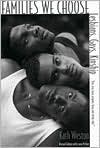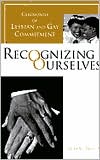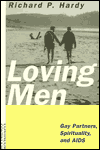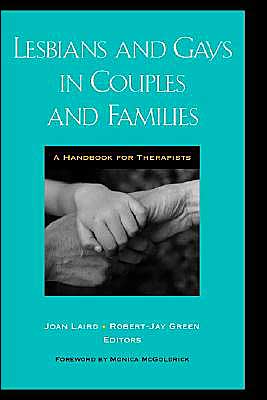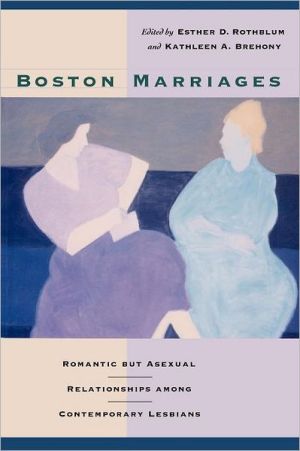No Place Like Home: Relationships and Family Life among Lesbians and Gay Men
In this rich, surprising portrait of the world of lesbian and gay relationships, Christopher Carrington unveils the complex and artful ways that gay people create and maintain both homes and "chosen" families for themselves.\ "Carefully separating stereotype from reality, Carrington investigates family in the gay and lesbian community. Relying upon interviews and observation, the author analyzes the loves and routings of 52 diverse lesbian, gay, and bisexual couples in the Bay area. . . ....
Search in google:
In this rich, surprising portrait of the world of lesbian and gay relationships, Christopher Carrington unveils the complex and artful ways that gay people create and maintain both homes and "chosen" families for themselves. Library Journal Carefully separating stereotype from reality, Carrington (sociology, San Franciso State Univ.) investigates family in the gay and lesbian community. Relying upon interviews and observation, the author analyzes the lives and routines of 52 diverse lesbian, gay, and bisexual couples in the Bay area. Carrington explores several areas: "feeding work," the business of planning and executing meals; housework; "kin work," the creation and preservation of family connections; "consumption work," purchasing goods and services for the family; and the division of labor between partners. Beware: no domestic stone is left unturned. After five chapters of exacting detail about the domestic lives of these families, Carrington closes the work with a discussion of the raging same-sex marriage debate and posits an enlightened solution to this dilemma. This work adds much to the growing body of literature on domestic work and gender. Recommended for gender, gay and lesbian, and family social science collections.--Kimberly L. Clarke, Univ. of Minnesota Lib., Twin Cities Copyright 1999 Cahners Business Information.
Acknowledgments Introduction 1. Feeding Lesbigay Families The Character of Feeding Work Feeding Work and the Creation of Gender, Class, Ethnic, and Family Identities 2. Housework in Lesbigay FamiliesThe Character of Housework Managing and Envisioning Housework Variations in Housework among Lesbigay Households Housework and Relationship Longevity 3. Housework and the Social Production of Lesbigay FamilyKin Work among Lesbigay Families Kith as Family The Lesbigay Family Kin Keepers Variations in Kin Work Patterns Kin Work and the Creation of Family 4. Consumption Work in Lesbigay FamiliesThe Character of Consumption Work Variations in Consumption Work Sustaining Lesbigay Families through Consumption Work 5. The Division of Domestic Labor in Lesbigay FamiliesThe Egalitarian Myth The Egalitarian Pattern The Specialization Pattern Pragmatic Choices and the Sense of Fairness Conclusion: Domesticity and the Political Economy of Lesbigay Families Family Aspirations The Political Economy of Constructing Family Now You See It, Now You Don't: Gender and Domesticity Devalued and Invisible: Lesbigay Domesticity Marriage and Lesbigay Domesticity: Who Will Be Bound by the Ties that Bind? What Do Lesbigay Families Need to Prosper? Appendix A: Interview Guide Appendix B: Sample Characteristics References Index
\ Library JournalCarefully separating stereotype from reality, Carrington (sociology, San Franciso State Univ.) investigates family in the gay and lesbian community. Relying upon interviews and observation, the author analyzes the lives and routines of 52 diverse lesbian, gay, and bisexual couples in the Bay area. Carrington explores several areas: "feeding work," the business of planning and executing meals; housework; "kin work," the creation and preservation of family connections; "consumption work," purchasing goods and services for the family; and the division of labor between partners. Beware: no domestic stone is left unturned. After five chapters of exacting detail about the domestic lives of these families, Carrington closes the work with a discussion of the raging same-sex marriage debate and posits an enlightened solution to this dilemma. This work adds much to the growing body of literature on domestic work and gender. Recommended for gender, gay and lesbian, and family social science collections.--Kimberly L. Clarke, Univ. of Minnesota Lib., Twin Cities Copyright 1999 Cahners Business Information.\ \

